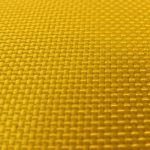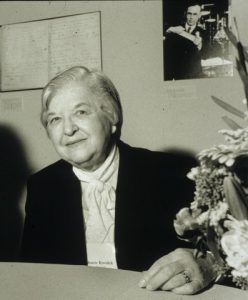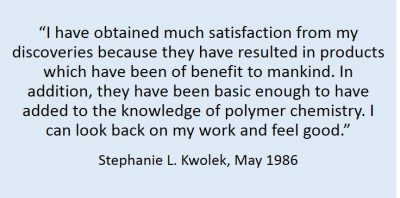
The bulletproof vests that protect police and military personnel around the world, the cords that held the Pathfinder spacecraft on its descent to the surface of Mars, and the gloves worn by workers in the metalworking industry. What do they have in common?
The answer is Kevlar®, a highly durable polymeric synthetic fiber that combines high strength and low weight (it is five times more resistant than steel per weight module). The fiber can be used as a raw material for cords or flexible and comfortable fabrics. Also, it can be added to other materials to reinforce them. Kevlar® generates products capable of resisting the most diverse aggressions, from shrapnel and stab wounds to firearm shots. Also resistant to extreme temperature and pressure conditions, the fiber has been in the desert, on the mountain, in Antarctica, on the seabed and in space.
The history of this material begins, of course, with a scientific discovery that was made in 1965 in one of the DuPont laboratories by Stephanie Louise Kwolek. Stephanie had a bachelor’s degree in chemistry, without a doctorate and was the only female representative in the laboratory. Her competence and passion found in this place and at that moment a favorable environment, which yielded good results, not only for the company, but also for humanity as a whole.
From walks in the woods to DuPont laboratories

Stephanie Kwolek was born on July 31, 1923 in the United States, the daughter of Polish immigrants. Together with her parents and younger brother, her childhood was in New Kensington, a small town 30 km from Pittsburg, Pennsylvania, in a wooded area she used to walk with her father while trying to discover animals and identify plant species, whose leaves were pasted and classified in a notebook. Her father deceased when she was only 10 years old, but he was responsible for developing a strong curiosity and taste for experimentation in Stephanie. With her mother, who until her father’s death spent much of her time at home in front of the sewing machine (later she started working in the industry to support the family), Stephanie developed her creativity and taste for fashion. The girl loved making paper clothes for her paper dolls.
After fantasizing about a career as a fashion designer, Stephanie Kwolek discovered that she wanted to be a doctor. However, as medical school was very expensive, she went to study science at Carnegie Mellon University in Pittsburg. More precisely, she attended Margaret Morrison Carnegie College, which was a college for women within that university. During her university years, in addition to an excellent academic performance, Stephanie gathered laboratory experience, doing work for the university and for companies during her summer vacations.
Stephanie graduated in 1946, at the age of 23, with a “major” in chemistry and a “minor” in biology, and went on to look for a job in the field, thinking about working for a few years until she collected the money to start her medical course. Stephanie was quickly hired by DuPont – by then already famous for the invention of nylon, the first synthetic fiber in history, among other products. The young woman then moved to Buffalo, New York, to work as a chemist in the Rayon Department, which would later become the Pioneer Textile Research Laboratory, where she worked with the synthesis of new polyamides and polyesters.
In 1950, the laboratory was transferred to the company’s main “invention site,” the so-called Experimental Station, located in Wilmington, Delaware, where Stephanie moved to in order to contribute with the team that would try to develop new methods of polymer production, performed at low temperatures, to create fibers with the highest possible resistance.
Passionate about the laboratory
By that time, Stephanie had already traded her dream of being a doctor for the passion of being a scientist. It fascinated her to have a new challenge each day and to learn something new every day. Furthermore, the working environment in that DuPont laboratory was very positive for her.
To begin with, the job was stable and there was a certain freedom to choose the research topics, within a list that the director prepared based on the company’s objectives. (Stephanie always liked participating in two projects simultaneously, preferably one that was more fundamental and the other one more applied). To develop her research, Stephanie could work independently, following her own plans, and without the pressure to generate immediate economic results. She just needed to have good sense to know when to stop a project that would not bear fruit in the medium term. This possibility of independent and free research was important not only to satisfy the researcher’s creative and curious nature, but also because she was working on very new lines of research, still lacking fundamental research, which needed to be done within the laboratories of the company.
In addition, there was great equipment and many opportunities to exchange ideas with colleagues. Finally, Stephanie was able to publish her results in articles or books, after the texts were reviewed by professionals from various sectors of the company, who checked whether the publication of that data could harm business. For Stephanie, writing articles was an important moment in her work, when ideas became more organized and results were subjected to scrutiny.
 In her view, the set of good working conditions generated a conducive medium for scientific discoveries capable of generating radical innovations (new materials or molecules and new synthesis processes) that could position the company at the forefront of the market. As was the case with Kevlar®.
In her view, the set of good working conditions generated a conducive medium for scientific discoveries capable of generating radical innovations (new materials or molecules and new synthesis processes) that could position the company at the forefront of the market. As was the case with Kevlar®.
The discovery that spawned Kevlar®
In the 1960s, the Pioneer Research Laboratory in Textile Fibers became involved in the search for a fiber being very resistant, but also very light. One of DuPont’s goals was to offer the market a material that would replace steel as a rubber additive in tire manufacturing, so as to make tires lighter and thus reduce fuel use, as a period of oil shortage was expected in the following years.
After experimenting with dozens of different polymers, the laboratory decided to start working with the group of polyaramides, or aromatic polyamides, which were promising in terms of properties, but also famous among researchers for the difficulty of dealing with them in the laboratory. The polyaramides were particularly difficult to dissolve due to the rigidity of their rod-shaped molecules, unlike the flexibility of many other polymer molecules.
Persistent, as well as competent, Stephanie Kwolek was cast to participate in the challenge. Or, rather, the challenges, in the plural, that arose daily in each of the stages involved: the choice and synthesis of the compounds that would react to form the polymer (which, at the time, did not readily exist for sale), the polymerization method and, not least, the dissolution of the polymer obtained. In fact, to form the polymer fiber desired by DuPont, it was necessary to spin the polymer. For this, the laboratory had a very simple equipment, called a spinneret, in which a polymeric solution is forced to pass through small holes. In the next step, the solvent is removed and the fibers obtained.
At this stage of development, Stephanie was testing different compounds to dissolve the difficult polyamides, when she looked at her freshly prepared polymer solution and noticed, with the naked eye, that it was essentially different from all the others she had ever seen. The new solution was opaque and fluid, and not transparent and viscous as expected. In addition, when stirred, it was opalescent (with reflections in the colors of the rainbow).
Instead of throwing it down the drain, she got excited and took it to the spinneret to perform the spinning test. Believing that the milky aspect was due to the presence of particles in suspension that could clog the holes of the spinneret, the equipment technician refused to do the test. The spinning was done a few days later, after Stephanie scientifically proved that there were no particles in the solution. And the result was remarkable. The polyamide fibers obtained with the recipe developed by Stephanie were much more resistant than nylon, and also more resistant than steel, but much lighter. As soon as she confirmed the results of the characterization of the new material, she presented her discovery to her superiors, who joined her enthusiasm.
But what is the explanation for the super strength of polyamide fibers? Here’s the thing. Stephanie Kwolek managed to temper a polyaramide and with it prepare a polymeric solution of rigid macromolecules. During the spinning process, these molecules remained fully stretched and aligned in an orderly fashion. The result was a fiber with a very organized structure, from which the exceptional properties emerged.
 The solution she had placed in the spinneret, the scientist would later discover, could be classified as a liquid crystalline solution. From this discovery, several new high-performance fibers were created based on liquid crystalline solutions, mainly Kevlar®.
The solution she had placed in the spinneret, the scientist would later discover, could be classified as a liquid crystalline solution. From this discovery, several new high-performance fibers were created based on liquid crystalline solutions, mainly Kevlar®.
Product and market development
The development of the Kevlar® product, which started immediately after Stephanie’s discovery in 1965, took several years within DuPont, and involved an interdisciplinary team without the direct participation of Stephanie, who remained in the laboratory in search of new discoveries. The process included the development of the final chemical formula and adjustments to the spinning equipment. The adaptation to the industrial scale took into account economic, practical and ecological issues. In addition, starting in 1972, a marketing plan for Kevlar® was designed and put into practice, based on partnerships with potential customers to customize the product according to the desired application, generating an entire family of fibers.
Thus, it was in 1982 that the product was actually marketed, seventeen years and hundreds of millions of dollars after the initial scientific discovery. Since then, the Kevlar® family has conquered dozens of markets through hundreds of products, such as firemen boots, coatings for armored cars, rackets and components for boats, airplanes and automobiles, to name just a few examples besides those mentioned in the beginning of this story.
As for Stephanie Kwolek, she continued to work at DuPont until her retirement in 1986. She won several awards and honors for her work with liquid crystal solutions. She became a female icon of scientific discovery and “the face” of Kevlar®. After leaving the company, she dedicated time to encouraging girls to work in research, in addition to advising DuPont. She died at the age of 90, in June 2014, in Wilmington.
Some references:
- Stephanie L. Kwolek, interview by Raymond C. Ferguson in Sharpley, Delaware, 4 May 1986 (Philadelphia: Chemical Heritage Foundation, Oral History Transcript # 0028). Available here.
- Stephanie L. Kwolek, interview by Bernadette Bensaude-Vincent at Wilmington Delaware, 21 March 1998 (Philadelphia: Chemical Heritage Foundation, Oral History Transcript #0168).
- Women in Chemistry: Stephanie Kwolek. Canal no YouTube do Science History Institute. Available here.
- The Kevlar Story – an Advanced Materials Case Study. David Tanner, James A. Fitzgerald, and Brian R. Phillips. Angew. Chem. Int. Ed. Engl. Adv. Mater. 28 (1989) No. 5.
- Kevlar Technical Guide. Available here.
